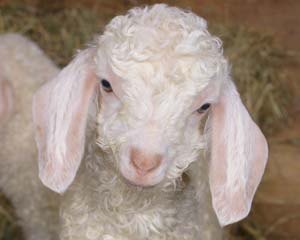30 August 2018
British Veterinary Association and Goat Veterinary Society consider the use of appropriate anaesthesia and analgesia as vital to the welfare of goats at the time of disbudding
Anaesthesia
must be used, and pain relief should be used, for all disbudding procedures in
goat kids to minimise pain and unnecessary suffering, according to a joint
position paper launched by the British Veterinary Association (BVA) and the
Goat Veterinary Society (GVS) today.
Disbudding
is the surgical removal of the horn buds in some goats, usually within the
first seven days of life, to prevent injury to themselves or other goats and
livestock in their environment and to allow for safe management. The procedure
involves cauterising the horn buds with hot irons after cutting off any
well-developed tips.
If local anaesthesia is
used, disbudding requires an effective block of four nerves to desensitise the
buds, leading to a danger of a toxic local anaesthetic overdose in a high-risk
neonatal kid. Their skull is also very thin, and, in addition, many
conventional calf disbudding irons do not have a large enough head to remove
the bud and surrounding soft tissue effectively.
BVA and GVS's ‘Goat kid
disbudding and analgesia' position paper recommends general anaesthesia induced
prior to disbudding as the simplest and safest solution from a practitioner point
of view, though the paper recognises that in skilled hands local anaesthesia
can also provide a satisfactory solution, particularly for on-farm use.
Disbudding can also be
stressful for goat kids, with evidence to show changes in behaviour and physiology
associated with pain and distress during and after the procedure. In a survey
carried out by GVS and referenced in the position paper, veterinary surgeons
who between them disbud over 2,000 kids annually all reported using
supplementary analgesia as a norm, without any adverse reactions.
In the absence of
analgesics licensed for use in goats in the UK, and none licensed for any
animal that's only a few days' old, the principles of the Cascade under the
Veterinary Medicines Regulations (2013) should be applied when considering
their use.
The paper further
recognises that disbudding is a skilled, high-risk procedure and recommends
that veterinary surgeons should be proficient in undertaking it if required by
their role.
British
Veterinary Association President John Fishwick said:
“The
prevention and management of pain and unnecessary suffering in goats during and
after the disbudding procedure was identified by BVA and GVS as essential for
the health and welfare of the animals following the launch of BVA's Animal
welfare strategy in 2016, with the two organisations working closely
together to put together an evidence-based best practice position and set of
recommendations for the profession.
“Following
a review of available evidence, we consider the use of appropriate anaesthesia
and analgesia as vital to the welfare of goats at the time of disbudding, which
is why I'd like to ask all veterinary surgeons working with goats to take our
recommendations into account.
“Disbudding
goat kids is a specialised procedure with potential risks and so it is
important that vets carrying it out are highly proficient and aware of the
potential hazards.”
Goat
Veterinary Society Chairman David Harwood said:
“GVS
is pleased to join BVA in developing this joint position on the disbudding of
goat kids. Although it is not always necessary to remove the horn buds,
when the procedure is carried out, the welfare of the kid should be of
paramount importance.
“Any
veterinary surgeon seeing goats on even an occasional basis may get in touch
with the Goat Veterinary Society for help or advice on disbudding.”
The
‘Goat kid disbudding and analgesia position' follows on the heels of BVA and
the British Cattle Veterinary Association's joint statement last year
recommending the use of non-steroidal anti-inflammatory drugs in addition to
local anaesthesia when conducting disbudding and castration in calves.



